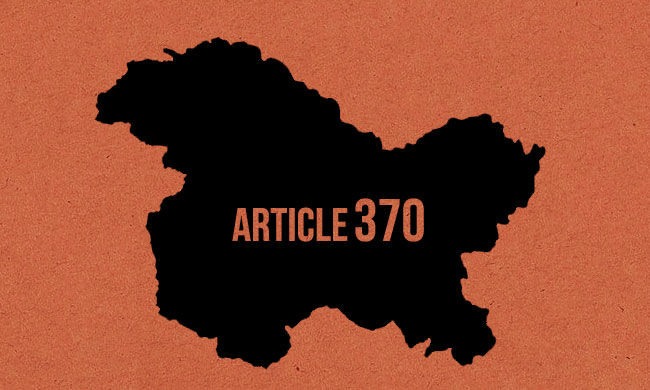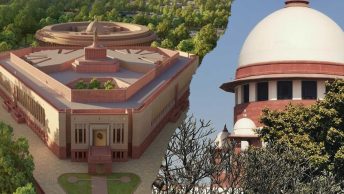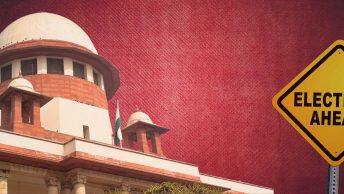In the realm of legal and political discourse surrounding the Indian Supreme Court’s judgment on the abrogation of Article 370, the prevailing narrative often succumbs to the dichotomy of the Court favouring either the government or the opposition. However, a careful reading and analysis of the judgment reveals a more complex and balanced picture. For one thing, the Court’s effort to crystallize the principles for the exercise of the President’s powers to declare President’s rule under Article 356 of the Constitution repays close study. The holding that the declaration of President’s rule does not merely transfer law-making powers to the Parliament, but also non-law-making powers (concerning the administration of the state in question), is an important legal clarification.
Crucially, the judgment paves the way for the return of democracy to Jammu and Kashmir, by mandating elections to be conducted before September 30, 2024, and calling for the prompt restoration of the region’s statehood. This facet of the ruling demonstrates the Court’s commitment to reinstating democratic processes, offering a beacon of hope for the residents of Jammu and Kashmir and their political representatives. That said, the judgment’s notable omission – the failure to delve into the constitutional validity of the Parliament’s decision to transform Jammu and Kashmir from a state to a union territory based on nothing more than the Solicitor General’s assurance that Jammu and Kashmir’s statehood will be restored – emerges as its weakest link. As former Supreme Court judge Rohinton Nariman powerfully argued in a recent lecture, the Solicitor General’s assurances are not legally binding on the Parliament, much less on future governments. Therefore, the Court has been, in our view, legitimately criticized for giving constitutional sanctity to a law officer’s assurance. That said, viewed through a pragmatic lens, this approach of forging a constitutional consensus with the executive and the legislature, may be an attempt to avert a potential Parliamentary backlash, as was seen when the Court’s judgment that the Election Commission of India must have the Chief Justice as a member, was promptly reversed by Parliament. This decision can potentially be viewed as a pragmatic move to maintain equilibrium in the delicate interplay between the three branches of government, thereby ensuring incremental progress rather than a seemingly significant but ultimately pyrrhic victory for the court. While the judiciary must adhere to legal principles irrespective of the political climate, it cannot operate in complete isolation from it. As American Constitutional law scholar Paul Freund once famously said, the Supreme Court “should never be influenced by the weather of the day but inevitably they will be influenced by the climate of the era.” The Supreme Court, as a parallel institution of governance, whether or not one likes it, finds itself tethered to the ebb and flow of politics. By returning the decision-making power to the political arena, where elections will be contested within the deadline set by the court, the court has positioned itself as a referee rather than a protagonist, reinforcing the essence of democracy.
While the Court’s direction that statehood must be restored in Jammu and Kashmir as soon as possible may not be justiciable in a court of law, it can nonetheless empower the embattled political opposition in the valley with a tool to exact accountability from the Union Government. One also wishes the majority had endorsed Justice Kaul’s suggestion for the establishment of a ‘Truth and Reconciliation Commission’, thereby elevating it to the view of the court. That would have demonstrated the Court’s statesmanship to forge a new chapter of healing and harmonious coexistence in the valley, thereby marking its contribution in undoing the innumerable excesses of the past.
In conclusion, the Indian Supreme Court’s judgment on Article 370 demands a nuanced interpretation that transcends the myopic lenses of political partisanship. The delineation between law-making and non-law-making powers, and the call for democratic restoration and statehood, underscore the court’s effort to navigate a middle course. As we critique the judgment, it is imperative to appreciate its complexities and recognize the delicate balance it seeks to maintain between the articulation of high constitutional principles and ensuring their practical implementation.
Rahul Bajaj is a practising lawyer in Delhi. Dr. Jain is a professor of law at NLSIU, Bengaluru. Views are strictly personal and must not be attributed to any organization.
Ed Note: This Article has been edited by Sukrut Khandekar and published by Harshitha Adari from the Student Editorial Team.






[…] Posted byRahul Bajaj and Dr. Sanjay Jain […]